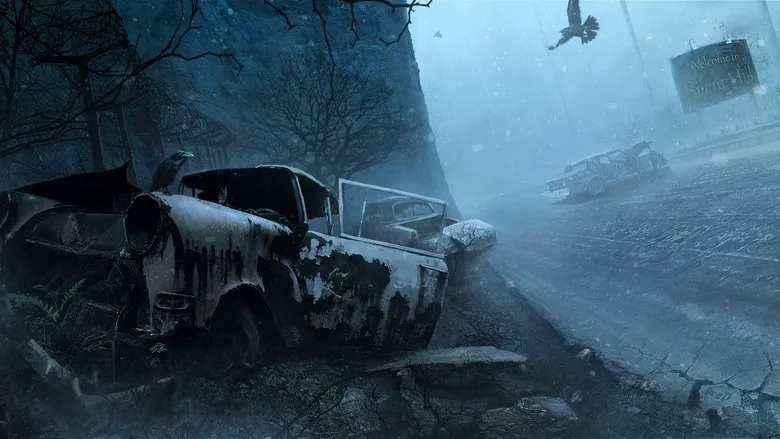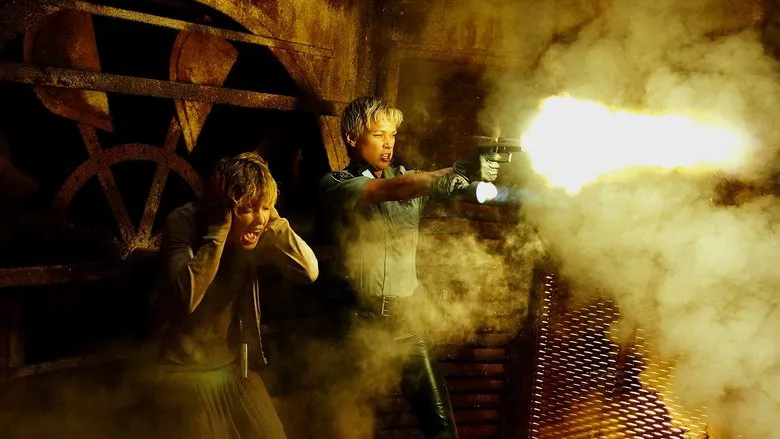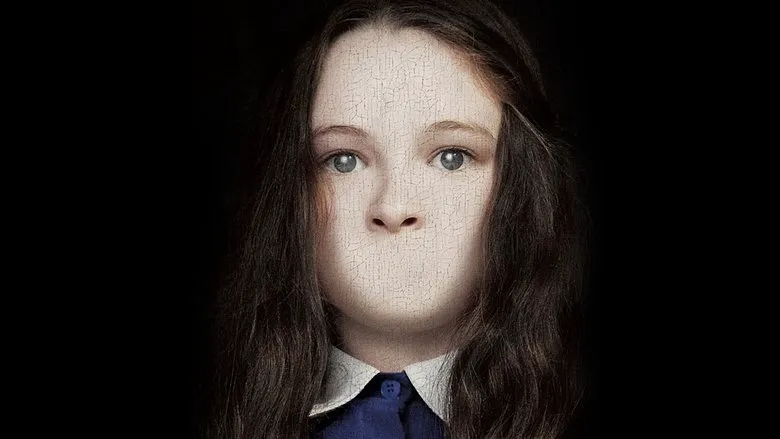
A troubled adopted daughter (Jodelle Ferland), seemingly sweet by day but a near-catatonic sleepwalker by night, leads her adoptive mother (Radha Mitchell) on a fateful journey to a desolate, ghost-town mining community – a place the child obsessively names in her sleep. As they approach the town, shrouded in an eerie fog, a phantom-like figure causes a car accident. The mother awakens to find her daughter missing. Desperate, she searches the empty town, stumbling upon a terrifying abyss and a deranged woman (Deborah Kara Unger) who believes the girl is her own long-lost child. Finally, she glimpses her daughter being led into a dark basement. Suddenly, an emergency siren blares, plunging the scene into darkness as grotesque monsters, the spirits of murdered infants with smoldering heads, emerge from the shadows. Radha Mitchell barely escapes, finding daylight once more.
However, her ordeal is far from over. A police officer (Laurie Holden), whose motorcycle also crashed in the fog, arrives and, inexplicably convinced that Radha Mitchell has abused her child, handcuffs her. A second, even more terrifying search begins, accompanied by another siren and a fresh wave of demonic creatures from the depths of hell. Meanwhile, the adoptive father (Sean Bean), a physically and mentally sound man who previously suggested institutionalizing the child, reaches Silent Hill unscathed. Upon entering the town, he’s stopped by police who discovered the abandoned motorcycle and jeep. He joins forces with the sheriff (Kim Coates) to search for his wife and daughter. Their perspective is grounded in reality: a mine explosion thirty years prior still burns underground, releasing toxic fumes into the air. But it soon becomes clear that they will find nothing, ever.

Layers of Horror: Deconstructing the Narrative
This isn’t just a plot; it’s a description of the multiple layers on which the story operates. Director Christophe Gans understands that there are levels of hell through which the “Silent Hill” player wanders, the players themselves, each with their own experiences, and the reality they inhabit when they look away from the screen. Gans translates this “three-in-one” concept onto the screen as a world of monstrous children, a world of maternal panic, and a world of male rationality. The key is to provide the audience with a thread to unravel, connecting these disparate elements. The brilliance lies in its simplicity: humanizing the game’s motivations, moving beyond mindless monster-slaying through endless levels of hell, and instead exploring the underlying themes of personal vengeance and societal drama. This shift immediately turns the focus inward.
Revenge and the Corrupting Power of Hatred
We all carry childhood grievances, and Christophe Gans gives them free rein. The film’s central theme is encapsulated in the phrase: “When you’re tormented for so long, fear and pain turn into hatred. And hatred changes the world.” This is the genesis of all the “possible worlds.” But such prolonged torment can only stem from a sense of righteous duty, from unwavering belief in a dogma that dictates action – a concept historically manifested as religious fanaticism. Hence, the film’s inclusion of cults and apocalyptic imagery. Unraveling the intricate connections between the mother, father, and the daughter’s three distinct personas requires careful observation. Navigating the various levels only intensifies the complexity of the underlying narrative. Ultimately, revenge for stupidity functions flawlessly, seamlessly merging inner hell, external madness, and the reality beyond the asylum gates. You exist simultaneously in all three realms.

A Globalized Nightmare
The all-encompassing inevitability is the very essence of “Silent Hill.” It offers sadists a dose of horror comparable to “Dawn of the Dead,” schizophrenics a mystical fog akin to “The Others,” and hysterics a psychodrama reminiscent of “Spider.” Other psychopaths might detect a faint echo of “Exorcist: The Beginning,” but the film’s “human” approach demands its own identity, transforming the visuals of Akira Yamaoka, the game’s creator. The “unifying” narrative hinges on the “realistic” scenes that bookend the film, seamlessly transitioning from the stylish, ashen fog of “purgatory” for the dead to the computer-generated “circles of hell.” “Reality” itself is divided into the “present,” glossy and pristine, and the “past,” grainy and overexposed.
The Inevitable Descent
To make the journey of self-discovery inescapable for every viewer, the transformation must consider not only Doré’s illustrations for Dante and the Unknown’s for Dostoevsky (Gans cites French surrealists), but also the entire history of cinema, where the genre of “High Noon” is visually distinct from “Freaks” or “The Ox-Bow Incident.” Every detail must be meticulously considered, transforming a seemingly ordinary provincial mining town into a Gehenna-scale catacomb, where a human fetus fleetingly appears within the swarm of insectoid monsters, a consequence of the sect leader’s hatred for the act of conception itself. While audiences may remember the armless and spider-like monsters (Toby Maguire can rest easy) and debate the film’s morality, the creators likely have other priorities.

Cinema as a Portal
The history of cinema serves as a portal, transporting us to any possible world through its well-established genre classifications. These classifications have become artifacts in themselves, a fact acknowledged and masterfully executed by “Silent Hill,” like a complex organ composition. A simple understanding of genre helps anyone survive between the computer (the inner world) and the cinema (the outer world), allowing them to venture beyond the gates. While the film may be emotionally detached – pure classification leaves everyone unsatisfied, and it’s not without its flaws – artifacts are often more captivating than people these days. In the first circle, when Radha Mitchell frantically runs around screaming “Help,” fully aware that no one is there, the foolishness hinders identification, but the individual folly is forgiven for the overall consciousness. In the church finale, where every word should be precious, the dialogue feels thin: “She’s lying to you. - No, I’m not lying. - She’s lying to you. - No, I’m not lying.” But the schematic nature is also forgiven, as there’s no escaping it.
People are only charming today when they don’t aspire to be artifacts, don’t try to take their place, but consider it an honor to be caught, like flies, in the web of context. Looking at the resumes of the creators of “Silent Hill,” the film should end with a group photo of the cast and crew: producer Samuel Hadida, screenwriter Roger Avary, director Christophe Gans, cinematographer Dan Laustsen, production designer Carol Spier, and special effects artist Patrick Tatopoulos.